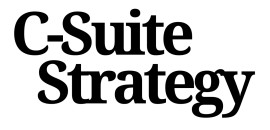
Understanding the role of budgetary quotation in strategic planning
Why budgetary quotations matter in strategic decision-making
In the landscape of project management and strategic planning, budgetary quotations are more than just preliminary numbers. They serve as the foundation for informed financial planning, guiding leaders as they allocate resources and set realistic expectations for project outcomes. Whether you are overseeing construction, interior design, or any initiative requiring a contract bid, a well-prepared budgetary quote helps clarify the project scope, potential cost, and resource allocation from the outset.
Setting the stage for project success
Budgetary quotes help organizations avoid costly surprises by providing a rough estimate of materials, labor, and additional services. This early-stage financial insight is crucial for aligning project specifications with available resources. By detailing cost ranges and project details, budgetary quotations enable decision makers to compare options, prioritize investments, and plan for contingencies. The process also supports subject change management, as adjustments to the project scope can be evaluated for financial impact before commitments are made.
Connecting budgetary quotations to broader financial strategy
Effective budgetary quotations are not just about numbers—they are about creating a transparent process that supports strategic objectives. Quotes help bridge the gap between design intent and financial reality, ensuring that every decision is grounded in data. This alignment is especially important for C-suite leaders who must balance innovation with fiscal responsibility. For more insights on how financial reporting enhances strategic decision-making, explore our advanced financial reporting strategies.
Best practices for integrating budgetary quotations
- Involve key stakeholders early to capture all project requirements and expectations
- Ensure that quotes reflect current market prices for materials and labor
- Document assumptions and exclusions to avoid misunderstandings later in the process
- Use budgetary quotes as a living document, updating as project details evolve
By embedding these best practices into your planning process, you lay the groundwork for accurate, actionable, and credible budgetary quotations that support both immediate project needs and long-term strategic goals.
Common pitfalls in budgetary quotation and how to avoid them
Recognizing Where Budgetary Quotes Go Wrong
Budgetary quotation is a critical step in project planning, but it is also where many organizations face challenges. A budgetary quote, by nature, is a rough estimate—yet it often becomes the foundation for financial planning and decision making. When the quote is off, the entire project can suffer. Here are some common pitfalls that can undermine the accuracy and usefulness of budgetary quotes, and practical ways to avoid them.
- Insufficient Project Details: A lack of clarity in project scope, design, or specifications leads to vague cost estimates. Without a clear understanding of materials, labor, and additional services required, quotes can miss the mark. Always ensure project details are well defined before requesting or providing a budgetary quote.
- Ignoring Cost Ranges: Relying on a single price point instead of a realistic cost range can set unrealistic expectations. Construction and interior projects, for example, often involve variables that affect the final cost. Providing a range helps stakeholders understand potential cost fluctuations.
- Overlooking Hidden Costs: Budgetary quotes sometimes exclude essential elements like project management, labor overhead, or subject-to-change materials pricing. These omissions can derail financial planning. A thorough review of the quote should include all foreseeable expenses.
- Failure to Update Quotes: Market conditions, design changes, or scope adjustments can quickly make a quote outdated. Regularly revisiting and updating budgetary quotes ensures alignment with current realities.
- Poor Communication: When stakeholders do not understand the assumptions behind a budgetary quote, misalignment and disputes can arise. Clear communication about what is included—and what is not—helps manage expectations and supports better decision making.
To address these pitfalls, organizations are increasingly leveraging essential demand planning software features to improve the accuracy and transparency of their budgetary quotations. These tools help capture project specifications, track changes, and provide a more dynamic approach to cost estimation.
Ultimately, adopting best practices in budgetary quotation—such as involving designers early, documenting project scope, and using technology—can help provide realistic expectations and support sound financial decision making. This approach not only improves the process but also builds trust among stakeholders and sets the stage for successful project outcomes.
Aligning budgetary quotation with organizational objectives
Bridging Budgetary Quotes with Organizational Vision
For CEOs and C-suite leaders, the process of budgetary quotation is more than a financial exercise. It is a strategic lever that must be tightly aligned with your organization’s broader objectives. When project teams provide budgetary quotes, these numbers should reflect not just the immediate project scope, but also the company’s long-term vision and priorities. This alignment ensures that every quote supports the direction you want your business to take, whether it’s expanding into new markets, enhancing design capabilities, or optimizing cost structures.
Translating Strategy into Project Specifications
To achieve this alignment, start by translating high-level strategy into clear project details. Designers, project managers, and financial planners must collaborate to define project specifications that mirror organizational goals. For example, if innovation is a priority, your budgetary quotation should include allocations for advanced materials, additional services, or new technology. This approach helps set realistic expectations for both cost and deliverables, reducing the risk of subject change mid-project and supporting better decision making.
Embedding Best Practices in the Quotation Process
Best practices in budgetary quotation involve more than just providing a rough estimate. They require a thorough understanding of potential cost ranges, labor, materials, and the full scope of construction or interior projects. By embedding these practices, you ensure that quotes help guide financial planning and resource allocation. This is especially important when dealing with contract bids or when project management teams need to justify budget increases based on evolving project requirements.
Ensuring Consistency Across Projects
Consistency in budgetary quotes is critical for maintaining trust with stakeholders and supporting strategic planning. Establishing standardized processes for collecting project details, estimating costs, and communicating price assumptions will help your teams deliver more accurate and actionable budget quotations. This consistency also enables better comparison across projects, making it easier to prioritize investments and allocate resources in line with your strategic objectives.
For further insights on how visionary aspirations can shape your strategic success, explore our article on crafting visionary aspirations for strategic success.
Leveraging technology to improve budgetary quotation accuracy
Digital Tools for Precision and Efficiency
Modern technology has transformed how organizations approach budgetary quotation. Digital platforms and project management software now allow teams to gather project details, analyze cost ranges, and generate accurate budgetary quotes faster than ever. These tools streamline the process by integrating data from design, construction, and financial planning, ensuring that every quote reflects up-to-date materials, labor, and project specifications.Automating Data Collection and Analysis
Automation reduces manual errors and speeds up the collection of project details. For example, cloud-based solutions can pull real-time price data for materials and labor, helping designers and project managers provide realistic expectations to stakeholders. Automated systems also flag discrepancies in project scope or additional services, supporting more reliable budgetary quotation and minimizing the risk of subject change during the contract bid phase.Enhancing Collaboration Across Departments
Technology bridges gaps between teams. When designers, financial planners, and construction leads work from a unified platform, they can share project specifications and cost estimates in real time. This transparency ensures that every department is aligned on the quote budgetary process, leading to better decision making and more accurate budgetary quotes.Best Practices for Technology Adoption
- Choose project management tools that integrate with your existing financial systems
- Train staff on how to input and interpret project details for accurate budget quotation
- Regularly update databases with current materials and labor costs
- Leverage analytics to review past quotes and improve future budgetary quotation accuracy
Communicating budgetary quotations to stakeholders
Building Trust Through Transparent Communication
Effective communication of budgetary quotes is essential for aligning stakeholders and ensuring smooth project management. When presenting a budgetary quotation, clarity and transparency are key. Stakeholders—including project managers, designers, and financial teams—need to understand not just the numbers, but the rationale behind them.- Break down the quote: Clearly outline the cost of materials, labor, design, and any additional services. This helps stakeholders see how each element contributes to the overall project budget.
- Highlight project details: Specify the project scope, including any subject changes or potential cost ranges. This sets realistic expectations and reduces the risk of misunderstandings later in the process.
- Explain assumptions: If the budgetary quotation is a rough estimate, state the assumptions and project specifications used. This builds credibility and helps decision makers understand the context.
Facilitating Decision Making With Actionable Insights
Budgetary quotes help stakeholders make informed decisions about project planning, design, and construction. Providing a detailed breakdown allows leaders to assess whether the proposed budget aligns with organizational objectives and available resources. When communicating a budgetary quote:- Use visuals: Tables or charts can illustrate cost breakdowns, making complex financial information more digestible for non-financial stakeholders.
- Address potential changes: Discuss how changes in project scope or additional services could impact the final price. This prepares stakeholders for contract bid negotiations and future adjustments.
- Encourage feedback: Open the floor for questions and clarifications. This collaborative approach ensures all parties are aligned and committed to the project’s success.
Best Practices for Communicating Budget Quotations
- Be consistent in the format and terminology used across all budgetary quotes.
- Provide context for cost drivers, such as materials labor or design complexity.
- Document all communications for future reference and accountability.
Using budgetary quotation as a catalyst for innovation
Turning Budgetary Quotes into Innovation Drivers
Budgetary quotation is often seen as a compliance step in project management, but it can be much more—a catalyst for innovation. When approached strategically, the process of generating budgetary quotes can reveal new opportunities for creative solutions, cost optimization, and enhanced value delivery.- Encouraging Creative Design Choices: By providing detailed budgetary quotes early in the planning process, designers and project teams can explore alternative materials, labor strategies, and construction methods. This transparency helps align project specifications with both financial constraints and creative ambitions, fostering a culture where innovative ideas are not dismissed due to cost uncertainty.
- Identifying Cost Ranges for Experimentation: A well-prepared budgetary quote breaks down potential cost ranges for each project component. This clarity allows stakeholders to experiment with different design or interior options, knowing the financial impact of each choice. It also supports realistic expectations and informed decision making.
- Enabling Agile Project Management: Budgetary quotations that detail project scope, materials, labor, and additional services provide a foundation for agile adjustments. As project details evolve, teams can quickly assess the financial implications of subject changes or contract bids, making it easier to pivot and innovate without derailing the budget.
- Supporting Financial Planning for New Ideas: When quotes help clarify the cost and value of new features or services, leadership is more likely to approve innovative proposals. This is especially true when budgetary quotes include rough estimates for potential cost savings or revenue generation tied to innovation.
Best Practices for Innovation-Driven Budget Quotation
- Involve cross-functional teams in the quotation process to capture diverse perspectives on design, construction, and financial planning.
- Use technology to model different project scenarios and visualize how changes in materials, labor, or scope affect the overall budget.
- Regularly review and update budgetary quotes as project details and market conditions change, ensuring that innovation remains aligned with financial realities.














